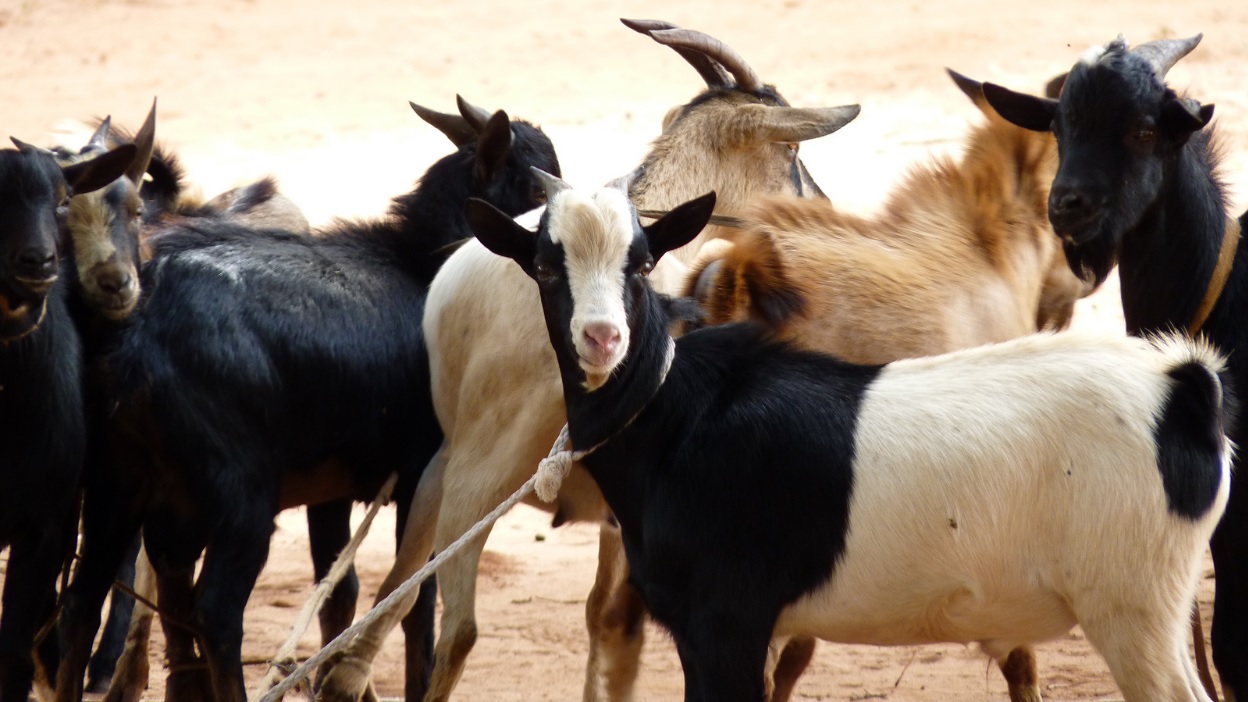
Tete Goat - First Geographical Indication of Mozambique
The province of Tete, in Mozambique, has a goat population estimated in about 300 thousand animals, which has been increasing over the years, and is classified as the first goat producer in this country.
A Geographical Indication (GI) works to identify products that own qualities, characteristics or reputation associated with a region (when clearly differentiated and easily identifiable) and are of extreme importance for the market, since it establishes a trustworthy relationship between the producer and the consumer.
The Certification of Mozambican’s Tete Goat as a Geographical Indication is rather important since it allows to expose in a more visible way, both in the national and international market,a product with exclusive characteristics, coming from a specific region. Its meat, well rated by consumers for having a high standard of quality, makes the meat unique, having conquered the right to a Geographical Indication. This exclusive quality is due to a mix between the feeding of the animal itself (which feeds on natural pastures, especially dry grass, apple, malambe and canhú) with geographic characteristics of the Tete region, where the tropical and dry climate prevails. The flavor of the product is sweet and prolonged, with a soft aroma and soft texture, in addition to a low caloric level and cholesterol.
In this way, the protection of the efforts made by the producers, the product’s reputation (uniformization of the quality) and the preservation and maintenance of the species is assured. Tete Goat is the first Mozambican Geographical Indication, being a milestone in the history of the Industrial Property System in Mozambique.
Currency Info
Final charges will be made in USD.
Currency conversion is for information purposes only and accuracy is not guaranteed. Overseas customers are encouraged to contact their bank or credit card provider for details on any additional fees these institutions may include for currency conversion.
Territory List
There are no results for your search.
- Africa
- Algeria
- Angola
- Benin
- Botswana
- Burkina Faso
- Burundi
- Cameroon
- Cape Verde
- Central African Republic
- Chad
- Comoros
- Congo (Republic)
- Côte d'Ivoire
- Democratic Republic of the Congo
- Djibouti
- Egypt
- Equatorial Guinea
- Eritrea
- Eswatini (Swaziland)
- Ethiopia
- Gabon
- Gambia
- Ghana
- Guinea
- Guinea-Bissau
- Kenya
- Lesotho
- Liberia
- Libya
- Madagascar
- Malawi
- Mali
- Mauritania
- Mauritius
- Mayotte
- Morocco
- Mozambique
- Namibia
- Niger
- Nigeria
- Réunion
- Rwanda
- Sao Tome and Principe
- Senegal
- Seychelles
- Sierra Leone
- Somalia
- South Africa
- South Sudan
- Sudan
- Tanzania (mainland)
- Togo
- Tunisia
- Uganda
- Western Sahara
- Zambia
- Zanzibar
- Zimbabwe
- Africa (OAPI)
- Africa (ARIPO)
- Other
- East Timor
- Macao
- Maldives
- Portugal
- European Patent (EPO)
- European Union Trademark (EUTM)
- International Trademark (Madrid System)
- Patent Cooperation Treaty (PCT)




